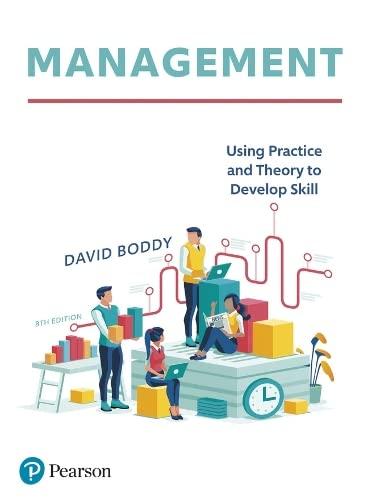Answered step by step
Verified Expert Solution
Question
1 Approved Answer
Industry and Company Analysis (group oral and written assignment) Select a company and primary industry in which it competes. The following two sections, Industry Analysis
Industry and Company Analysis (group oral and written assignment) Select a company and primary industry in which it competes. The following two sections, \"Industry Analysis\" and \"Company Analysis\" contain suggested topics. You should address and analyze what issues are most important for your organization and industry. However, each group must include a five forces analysis for the industry and a SWOT analysis for the company. A. INDUSTRY ANALYSIS The industry analysis includes two interrelated parts. The first part provides a broad overview of the industry, its boundaries, and its evolution over time, with particular emphasis on the key dimensions that have shaped its condition in the last ten years. It establishes who the participants in the industry are, the nature of the markets, key issues for the industry, growth rates, profitability, market shares, the products, financial trends, takeovers, the uncertainties in the environment, the distribution channels, etc. The second part of the report analyzes the current state of the industry in terms of the \"five forces\" framework proposed by Porter. In addition, the key points to be developed are the nature of competition, various segments in the industry, the general environmental trends that affect the industry, diversification efforts by participants and probably likely scenarios for the future. To summarize, the industry analysis includes issues such as the following: 1. DEFINITION OF THE TASK ENVIRONMENT The boundaries of the industry The competitors, their market shares, and segments they focus on The products 2. KEY STRATEGIC FACTORS IN THE INDUSTRY What are the ways to compete? Historically, which of these have been most successful? What distinctive competencies are required in the industry? What are the key forces that drive competition and determine profitability? 3. KEY GENERAL ENVIRONMENTAL FACTORS Technology Political, social, and economic trends Internationalization 4. STRATEGIC GROUPS WITHIN THE INDUSTRY Describe bases for clustering Identify \"strategic groups\" Name key firms or SBUs in each strategic group 5. KEY ISSUES AND FUTURE SCENARIOS Key issues/choices facing the members of the industry B. COMPANY ANALYSIS The company analysis also consists of two interrelated parts. The first part provides a broad overview of the firm, its evolution over time with particular emphasis on strengths and weaknesses, financial performance, product lines, distinctive competencies, culture, and key executives who have shaped the company's policies in the last ten years. The second part of the analysis identifies the current strategy at corporate and business levels and identifies any changes in strategy in the 10-year period. The report analyzes the company's performance in the light of the strategy followed and your evaluation of the current strategy. The report concludes with the key issues that the company is currently facing. The insights developed from the industry analysis should be of particular help in identifying the key issues/choices that the company is faced with, recommended actions, and implementation considerations. To summarize, the company analysis includes issues such as the following: 1. DESCRIPTION OF THE FIRM Product lines The size of the firm (sales, assets, personnel, etc.) The firm's distinctive competencies Key strategic managers The company's culture and philosophy 2. STRENGTHS AND WEAKNESSES In various functions (finance, marketing, production, R&D, etc.) In the total organization At various levels (top, middle, and lower) 3. OPPORTUNITIES AND THREATS Key opportunities (in terms of products, vacant market niches, etc.) Key threats (in terms of new entrants, product life cycle, product obsolescence, substitute products, etc.) 4. CURRENT STRATEGY At corporate and business levels Sources of competitive advantage(s) and sustainability 5. ISSUES FACING THE FIRM Match of strengths and weaknesses with opportunities and threats Product market choices Potential/opportunities for value creation Personnel issues (including managerial succession) Stakeholder related issues 6. RECOMMENDED ACTIONS AND IMPLEMENTATION CONSIDERATIONS Goal consistency Strategic relevance Organizational capability Each group will provide a 15 minute discussion during the final group call. RATHER THAN ATTEMPT TO \"COVER\" THE ENTIRE PAPERFOCUS ON THE MOST \"INTERESTING\" AND \"INSIGHTFUL\" ASPECTS. The oral presentation counts 10% and the paper counts 10% of the course grade
Step by Step Solution
There are 3 Steps involved in it
Step: 1

Get Instant Access to Expert-Tailored Solutions
See step-by-step solutions with expert insights and AI powered tools for academic success
Step: 2

Step: 3

Ace Your Homework with AI
Get the answers you need in no time with our AI-driven, step-by-step assistance
Get Started


